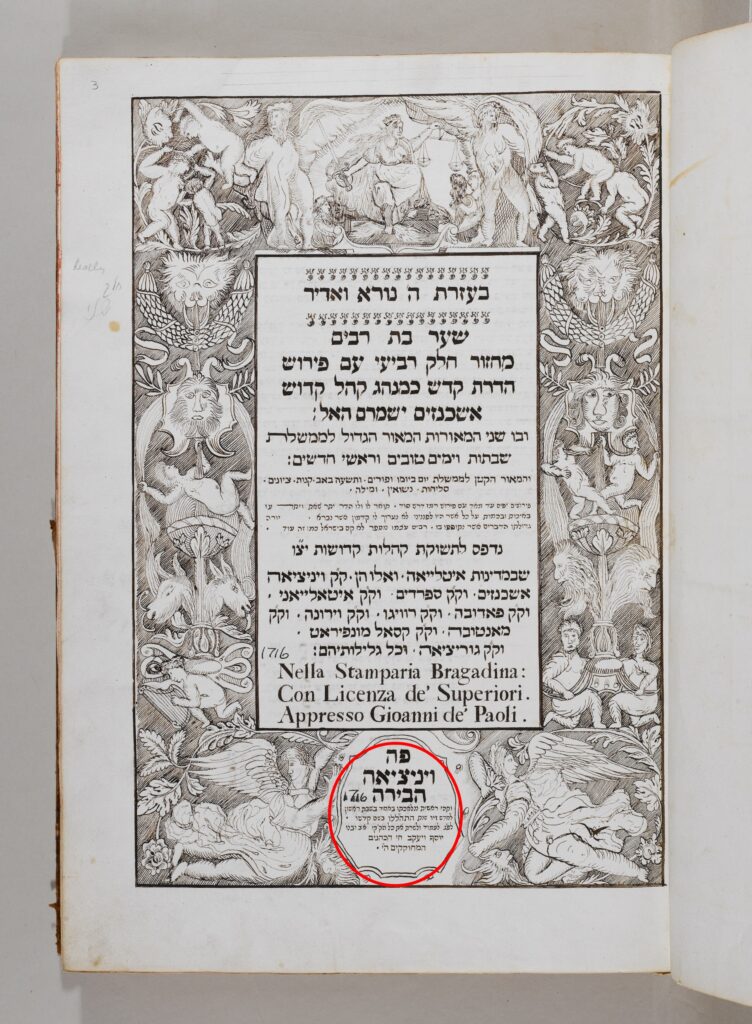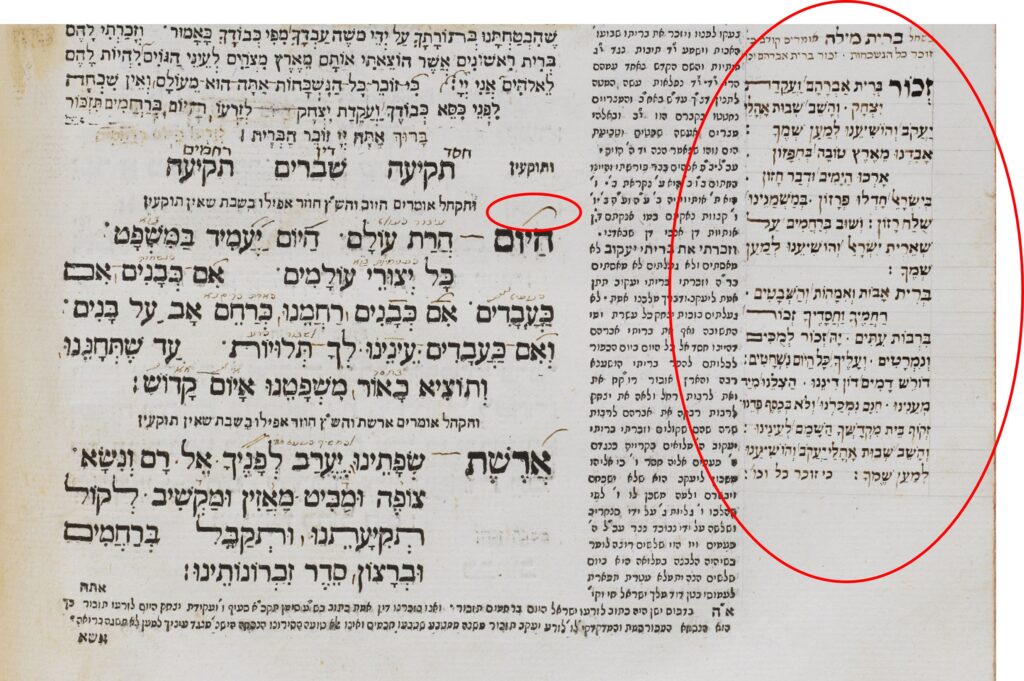Sha‘ar Bat Rabim

Adapted from the forthcoming book Discovering Great Treasure:
Sha‘ar Bat Rabim (MS New York 10663) is an extraordinary manuscript/printed-book hybrid that vividly illustrates the concept of the “lives of books.“ This volume, originally printed in Venice, serves as a prayer book for Rosh Hashanah and Yom Kippur according to the Ashkenazic rite. It is notable for both its printed text and the numerous manuscript pages inserted throughout. One particularly striking feature of the manuscript is the elaborate ornamental title page, hand-drawn to replicate the original printed design. This title page bears the dates 1711 and 1716, reflecting the complex history of the manuscript‘s compilation and usage. The volume, originally printed in two parts, was later expanded and rebound in 1824 to accommodate the additional leaves and annotations.


The manuscript’s handwritten additions, which span several generations of cantors in the Ashkenazi synagogue of Padua, provide a fascinating record of the evolving liturgical practices within the community. For instance, the annotations include instructions for modifying the service and adding specific piyyutim, which reflect the dynamic nature of Jewish liturgical traditions.
Throughout the manuscript, one can find numerous examples of the intricate interplay between printed and handwritten text. The printed sections, executed in black ink, are complemented by the handwritten annotations in brown ink, creating a visually striking contrast. This blend of print and manuscript highlights the manuscript’s role as a living document, continually adapted and expanded by its users. The printed text forms the core, serving as a foundation upon which multiple generations added their insights and adaptations.

In thinking about the history of this book, consider how we can adapt our High Holiday services to make them more meaningful for ourselves and our communities.
Back to Glimmers of Light: Reflections on Hope for the Days of Awe 5785



